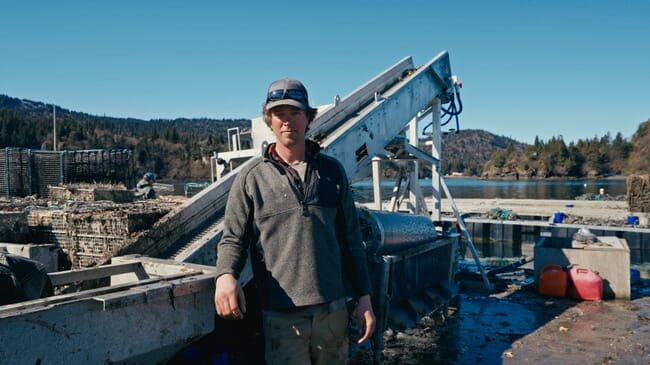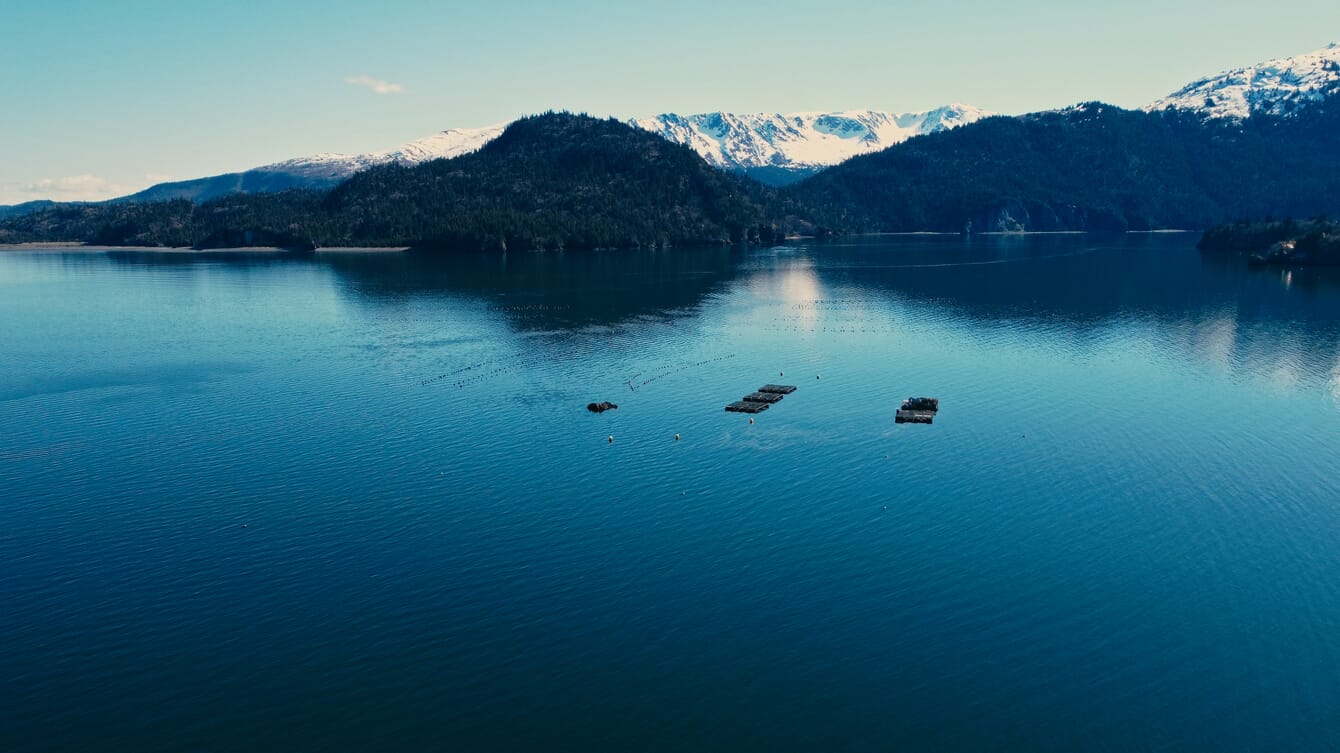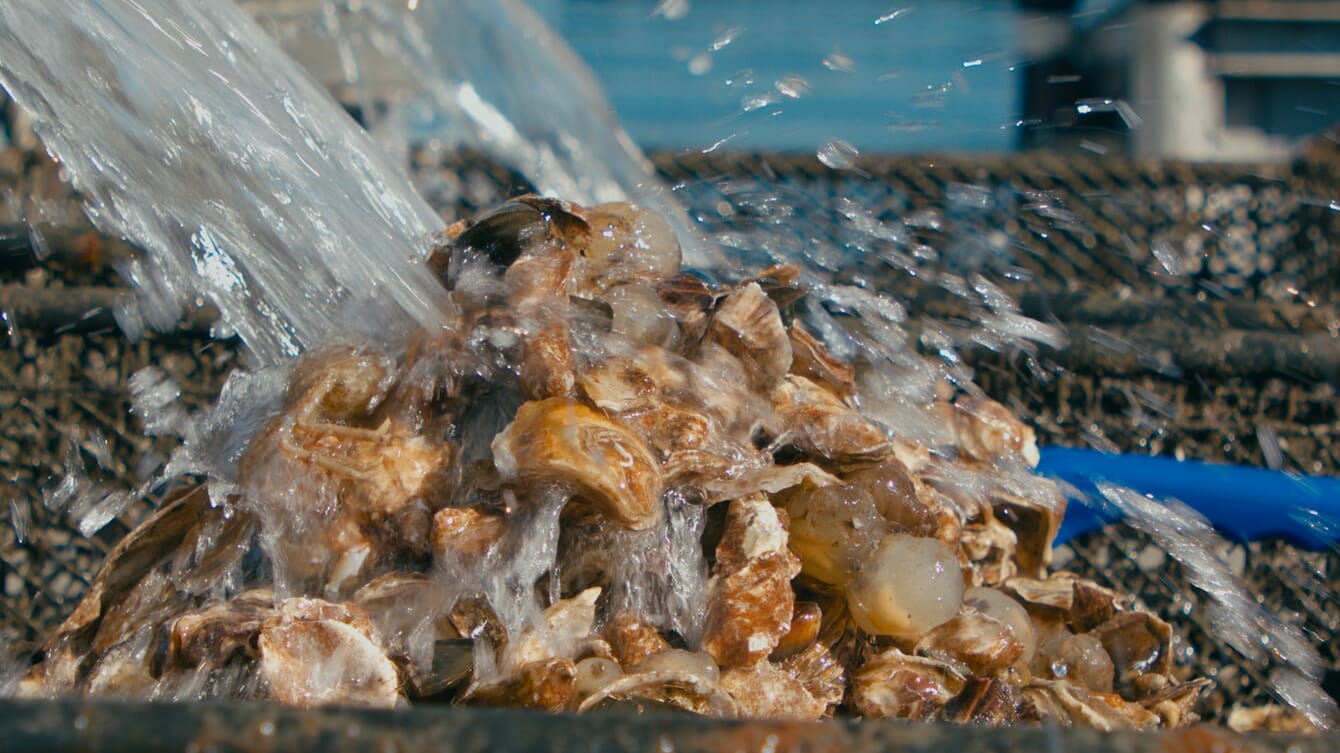
Some fishers saw us working 12 hours a day on our oyster raft and said: What are you doing dude? Just buy a boat! Seining is so easy. Well, sadly some of them are out of business now,” says Greg Bates, co-owner of Alaska Shellfish Farms, one of the state’s largest Pacific oyster producers.
“To succeed in mariculture, you have to see what the others don’t see,” he adds.
Emigrating from Rhode Island, Bates and his wife Weatherly ran a successful oyster farm in Maine, falling in love with Alaska after spending their honeymoon on the last frontier. The couple established their farm in Kachemak Bay in 2007.
“We were young and saw lots of opportunities, especially in Halibut Cove where mariculture has a strong presence. It’s useful to set up shop where there are boat docks, hydraulic shops and other types of infrastructure for your business,” Bates reflects.
Along with its excellent water quality, Halibut Cove is connected to Anchorage, giving the couple access to markets in the lower 48 states.
“We’ve got a glacier a mile and a half away. Nowhere else in America do you have glaciers this close to an oyster farm. We have glacier-fed seawater mixing with water from the Gulf of Alaska, giving our oysters this unique taste. We call them Glacier Point Oysters,” Bates explains.
Bates started the farm with an old float that he pushed out to the cove with his skiff.
“It was pretty dangerous, but it worked. Our market was already established from our work in Maine, so we had ready buyers for whatever we could grow,” he recalls.
Just as the company cultivates oysters, Bates cultivates good ties with chefs and restaurants.
“It takes some time to build up your market. The key is quality and consistency,” he explains.
Eventually, the couple was able to buy out neighboring farms, increasing their output with a small hatchery and expanding to other product lines, like mussels and kelp.
After decades of work, Alaska Shellfish Farms ships out oysters across the states every week, year-round.
“We get seedstock from Hawaii, ordering three or four million baby oysters a year. We consider it a good year if we get better than a 50 percent survival rate,” Bates notes.

The company sells around a million oysters yearly – comparable to traditional oyster farms in Europe.
The farm grows oysters in floating rafts for up to four years, raising them in submerged trays alongside naturally-occurring mussels and kelp. The trays are periodically pulled up and cleaned to ensure good water flow.
“We keep sea urchins inside as they can graze down excess seaweed growth, but we remove starfish as they eat oysters,” Bates explains.
Come harvest time, the trays are hauled up. Laborers then clean and sort the oysters according to size, before shipping them out.
“We’ve customised a lot of our own equipment. Some of our gear was adapted from mussel farms, like conveyor belts for sorting,” Bates notes.
One specialised piece of kit Bates uses is the SED grader, a type typically used for sorting fruits and vegetables.
“This baby uses vision technology to measure and instantly grade up to eight oysters a second – almost 28,000 oysters an hour, which is equivalent to the working capacity of 13 people. Have you ever tried to teach a 20-year old dude how to sort oysters? With this, we no longer have to. Hopefully this boosts our production,” Bates explains.

Halibut Cove’s Glacier Point Oysters are renowned for their unique taste
He says that the Alaskan market usually wants big oysters, so most of what they produce – up to 90 percent – are sold in the lower 48 states. Through the years, the company has faced quite a few challenges, not least the pandemic, which greatly hampered growth.
“We’ve had our scares. We even sold oysters in a small boat via the ‘honour system’ – but we do a lot of our work for our community, with our community,” Bates reflects.
Farming oysters in Alaska is a lifestyle that Bates says he wouldn’t trade for anything.
“We basically live and work in paradise. See that whale over there? Other people are like, wow. People pay to see this stuff,” he points out.
And his advice to the next generation of Alaskan oyster farmers?
“If you want to stay afloat, you need grit, you gotta dig in. We’ve been here for 17 years and we’re still standing. We’re not going anywhere,” he concludes.
*This article is part of a project commissioned by the SEC to highlight the region's mariculture sector. To learn more about the sector visit https://alaska.seaweedinsights...






